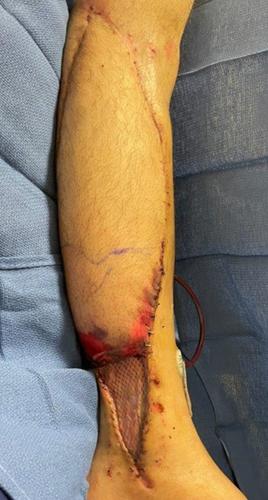Free tissue transfer is a mainstay treatment for lower extremity soft tissue injuries. When the traditional cross-leg flap cannot provide enough coverage, a cross-leg free flap (CLFF) is a limb-saving alternative. The aim of this study is to conduct a systematic review of the literature published on the CLFF.
We conducted a systematic review of articles describing the CLFF, according to Preferred Reporting Items for Systematic Reviews and Meta-Analysis guidelines. Inclusion criteria included articles with primary data on the CLFF. Exclusion criteria included those describing pedicled cross-leg flaps or lacking complete data. Data analysis was performed using SPSS 29.0.
Our review included 28 articles encompassing 130 patients who underwent free tissue transfer. Most were male (63.8%) with a mean age of 32.4 years. Latissimus dorsi was the most common flap type (30.0%), followed by vertical rectus myocutaneous (20.0%). Average flap size was 301.8 cm2, with trauma in the lower third of the leg being the most common indication (73.1%). The contralateral posterior tibialis was the most common recipient artery (84.1%) followed by the anterior tibialis (9.5%). Complications included amputation (1.4%), partial graft loss, thrombosis, hematoma, prolonged pain, nonunion, and seroma; a forest plot was used to illustrate the low overall adverse events rate. Although bivariate analysis identified age, flap size, type, location, and donor site as variables significantly impacting the incidence of complications (p < .05), this was not sustained in a multivariate logistic regression model.
The CLFF remains an excellent option for limb salvage when a suitable recipient vessel is unavailable. Our review demonstrates 1.4% flap failure and an acceptable complication rate. While most cases in our review describe muscle flaps, we report a complex case of limb salvage using an unusually large anterolateral thigh flap.



